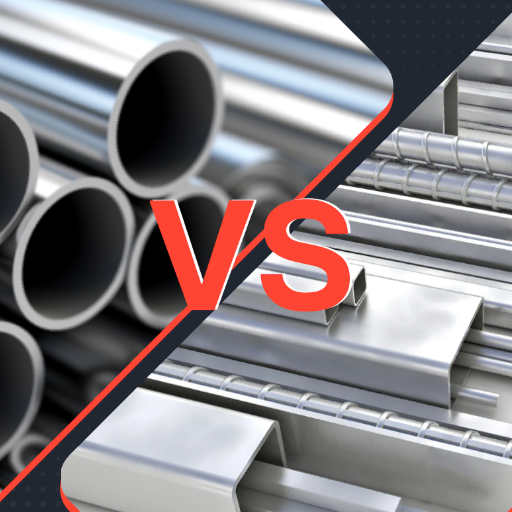Commercial lead is a metal employed in numerous situations, including batteries and radiation shielding. However, its magnetic characteristics often pose a mystery, even misconceptions. Is lead ferromagnetic? Can it exhibit actions akin to magnetic materials such as iron and nickel? The discussion in this piece revolves around trying to explain lead’s magnetism considering its structure and possible interactions that could modify lead’s magnetism. Whether you are a hobbyist, student, or a seasoned professional dealing with metals, this guide will walk you through understanding the rationale behind lead’s behavior in magnetic fields. The physics will keep revealing itself in the course of the article.
What Are the Magnetic Properties of Lead?

From our explanations, we can classify lead to be a diamagnetic material as it will have a very weak and negative response at any instance to an applied magnetic field. It does not attract, but instead slightly repels magnetic fields. Lead is unlike any iron where it would attract the ferromagnetic materials. This is the case because the electrons paired up in orbitals are neutral and cannot contribute to any net magnetic moment. Hence, lead is feebly, and permanently, diamagnetic, having very low magnetic susceptibility and non-magnetic for practical purposes.
Is Lead a Magnetic Metal?
Although lead is classified as a diamagnetic metal, that does not prevent its relation to magnetic fields from having some relevance in science and industry. Some of its uses in the industry include working with lead alloys, because of its weak interaction with magnetic forces. Superconducting applications present another area of interest; lead becomes a superconductor, and thus completely expels magnetic lines of force (the Meissner effect), when cooled to below the critical temperature of roughly 7.2 Kelvin. This makes lead valuable for use in cryogenic technologies and other sophisticated systems. Oxford Instruments makes use of this fact and has developed superconducting magnetic devices with small interference to the magnetic fields used in the device under tests, thus enabling precise measurements. Thus, to summarize, lead is one of the materials which can be used when extremely accurate measurements of low temperatures are required.
What Makes Lead Diamagnetic?
The electronic structure of lead is responsible for its diamagnetic behavior. In materials like lead, which are diamagnetic, all electrons are paired, which causes their magnetic moments to nullify. The material moves to generate an electric field which opposes the magnetic field and it does so weakly, owing to motion of the revolving electrons as per Lenz’s Law. All the passive responses, when measured, are weaker than ferromagnetic or paramagnetic responses and are defined by negative magnetic susceptibility.
For lead, its atomic configuration (having a full 6p subshell) while lacking unpaired electrons primarily enhances this diamagnetic property attributing to no net magnetic moment. The combination of that property with lead’s high density renders it as a substance that can only weakly be magnetized under the influence of external magnetic fields. Such characteristics are the result of quantum mechanics, emphasizing the non-permanency and induced nature of, in this case, diamagnetism for metals such as lead.
How Does Lead’s Electron Configuration Affect Its Magnetism?
The filling and vacant spaces within an atom’s shell determines the unique characteristic features of the atom, its magnetic properties. The electron configuration of Lead is [Xe] 4f14 5d10 6s2 6p2 which shows that the inner electronic shells and the 6p outer shell is partially filled. The 6p outer shell consists of one unstable electron pair which cancels each other out, therefore there is no magnetic moment when the atom is lead is at rest. Moreover, In the case of heavier elements such as Lead, the relativity impact change the behavior of electrons. This leads to weakening of the overall magnetic response of the element because the inner orbitals contraction and are made more stable. In combination with these reasons, Lead becomes responsible for changing conditioned weakly away from the conditions without an external magnetic field, where it is possible essence changes mask the effects indefinitely, even its existence.
How Does Lead Compare to Ferromagnetic Materials?

There is a notable difference between lead and ferromagnetic materials regarding their magnetic properties. Ferromagnetic materials like iron and nickel strongly and permanently retain magnetization due to aligned electron spins and will have a strong, permanent magnetization. However, lead is classified as a diamagnetic material. This indicates that lead only generates weak, temporary magnetic moments which oppose an external magnetic field. Furthermore, lead, unlike ferromagnetic materials, will not retain any magnetization after the external field is removed. This difference underscores the absence of atomic structure and electron configuration essential for strong magnetic interactions in lead.
What Are Ferromagnetic and Paramagnetic Materials?
Ferromagnetic materials are the substances that have strong magnetic properties due to the moments of magnetism being parallel. This is the case because of exchange interactions, which in the area of atomic neighborship defend for a parallel spin position. Iron, cobalt, and nickel and some of its alloys like alnico are examples of ferromagnetic materials. It can sustain a permanent moment of magnetism even after a magnetic field is removed: this is possible due to the magnetic domains in the material. Within each domain, atomic magnetic moment act uniformly nay rotationally and when the domains are coherently oriented under the external field, the material gets magnetized. These types of materials help in electric motors, transformers, and magnetic storage devices as they have high permeability and preserve strong magnetic fields.
What Are the Differences Between Ferromagnetism and Diamagnetism?
The two behaviors of magnetism within ferromagnetic and diamagnetic materials use distinct mechanisms to yield varying types of magnetism. In ferromagnetism, unpaired electrons with magnetic moments that can align in parallel within domains possess a spontaneously net magnetic moment. Materials with iron, cobalt, and nickel are the only sources capable of providing this kind of domain magnetism because metals have strong exchange interactions between bound electrons. Such ferromagnetic materials can exhibit hysteresis, which is retention of magnetization even after removal of an external magnetic field. Hysteresis makes these materials useful as permanent magnets, for electric motors, and data storage devices.
Diamagnetism is the weaker case of magnetism compared to ferromagnetism, and it results from paired electrons induced motion in the presence of an external ferromagnet. These paired electrons create an antagonistic magnetic field that leads to repulsive behavior with incoming magnetic forces. All materials exhibit some degree of diamagnetism, which is most prolific with bismuth and graphite. Unlike other ferromagnetic materials, these do not cover the range of more powerful characteristics like ferromagnetism or paramagnetism and for that reason the reaction is measured as the most noticeable. In contrast with ferromagnetism, diamagnetic materials do not exhibit magnetization creating the non-magnetic state instantaneously upon an external field removal.
The difference in strength of the magnetic effects, alignment of electron spins, and persistence of magnetization are the distinguishing factors. Strongly magnetic ferromagnetic materials are critical for numerous technological applications, whereas diamagnetic materials, while weaker, are important in precision instruments and some superconducting applications. These differences are important for material selection for a given scientific or industrial requirement.
Can Lead Be Magnetized?

Because lead is a diamagnetic material, it cannot be magnetized using conventional techniques. A diamagnetic substance opposes an external magnetic field with a weak magnetic field of its own which makes such substances resistant to being magnetized. This is the reason why lead is not suitable for applications that require permanent or strong magnetism.
What Conditions Allow Magnetization of Lead?
Though lead is intrinsically diamagnetic and cannot be magnetized under normal circumstances, the magnetic behavior of lead can be changed by some extreme conditions. For instance, lead exhibits the Meissner effect, which is the expulsion of available magnetic fields, when it is held at superconducting states. This happens beneath the critical temperature of 7.2 K at which lead turns into a superconductor. Moreover, some theoretical and experimental studies posit the ability of lead, like other diamagnetic materials, to be subjected to induced magnetism when an extraordinarily powerful external magnetic field is applied, which is usually the case for a laboratory setting with sophisticated magnetizing tools. This, however, is only transiently induced and will cease once the external field is removed. These instances demonstrate that although lead cannot attain permanent magnetization, its magnetism can be changed under precise controls.
Can Impurities in Lead Change Its Magnetic Properties?
Certain impurities of lead can change its magnetic properties. For example, traces of magnetic materials like iron, nickel, and cobalt can create moments of magnetism that counteract the lead’s inherent diamagnetism. These materials can cause several changes; for instance, they might disrupt the uniform structure of lead. Electronically, there may be domains that will respond even more magnetically and enhance external magnetic fields. Spectroscopic techniques coupled with advanced modeling technologies have revealed strong dependencies on the types and amount of impurities, showing them at the atomic level, for other elements’ boundaries with the host element. Also, other non-magnetic foreign substances may interrupt the electronic band theory of conductors, changing lead’s diamagnetism. Hence, the presence of such foreign matters in lead creates subtle yet definite changes on its magnetism. Alterations are even measurable when subjected to controlled experiments.
What Are the Applications of Lead in Magnetic Fields?

The primary applications of lead in magnetic fields stem from its superconducting characteristics as well as its ability to function as a protective shield. Lead is commonly employed as a restraining wall for electromagnetic interference (EMI) because of its extreme density which enables it to obstruct radiation as well as external magnetic forces. In addition, lead can achieve a metallic state in which it becomes a superconductor beneath its critical temperature of 7.2 K, permitting superconducting lead to carry an electrical current with no resistance while expelling magnetic fields through the Meissner effect. This phenomenon alongside the previously mentioned characteristics makes lead of great importance in research as well as the construction of superconducting magnets for medical imaging and particle accelerators.
How Is Lead Used in Magnetic Shielding?
Owing to its high density and exceptional diamagnetic characteristics, lead is employed in magnetic shielding applications. It can be used as a shield to reduce the electromagnetic fields of low frequency to a great extent due to its ability to redirect, buffer, and absorb magnetic flux lines. During the operation of some instruments like sensitive laboratory equipment or medical imaging apparatuses, for example, magnetic resonance imaging (MRI) scanners, lead is very useful in areas where precise measurements and operations are needed. Additionally, when coupled with other shielding materials such as mu-metal, lead further improves the passive shielding attenuation performance of the system and aids in constructing strong multi-layered shields. Modern studies are refining the designs of lead shielding by varying its thickness as well as integration techniques to balance its harmful effects with efficiency and environmental safety.
Can Lead Be Used in Alloys for Magnetic Applications?
In the case of lead, it is not magnetically attractive and has diamagnetic features. This means it will produce a weak magnetic field opposite to an external magnetic field. Its low magnetic susceptibility and density restrict its application directly in magnetic environments. But in the case of alloy composition, lead, can serve auxiliary purposes such as enhancing machinability or protecting against corrosion.
Alloys containing lead are most often used in specific applications where magnetic properties are not important. For instance, lead alloys may serve in systems that require strong damping capabilities or have excellent wear resistance rather than magnetic function. Recently, the field of metallurgy has developed enough for some scholars to investigate the function of lead as a trace element in alloys intended to improve physical resilience without damaging the structural integrity of materials interfacing with magnetic systems. Yet, because of ecological and hygienic concerns, lead-alloy systems are under tight scrutiny and control worldwide to make sure monitored development and implementation follow rigorous safety criteria.
What Other Metals Exhibit Similar Magnetic Properties?

Several metals exhibit magnetic properties similar to those enhanced by lead-alloy systems. The principal examples include:
- Iron (Fe): One of the most popular magnetic metals is iron as it has great magnetism and is widely used in transformers and motors.
- Nickel (Ni): Known to possess ferromagnetic nickel is often used in coins, batteries and certain alloys.
- Cobalt (Co): Another ferromagnetic metal is cobalt as it is known to be used for the manufacture of permanent magnets and magnetic recording media.
These metals are distinguished by their retention of magnetism making them useful in and a multitude of industrial and technological undertakings.
How Do Cobalt and Titanium Compare to Lead?
Transition metals, cobalt, and titanium differ significantly from one another in environmental consideration and lead alongside their physical properties and applications. What distinguishes cobalt is his magnetic properties and strength on high temperatures. This renders it an important part of superalloys, batteries, and other high-performance materials. On the other hand, titanium is well accepted for its strength versus its weight, and its strengthwhile corroding, deeming it indispensable in the aerospace industry, medical implants, as well as in chemical engineering.
Being a heavy metal, lead’s chief commercial advantage stems from his density, malleability, as well as resistance to radiation. Thus, lead is widely used in batteries, including the well-known lead-acid type, radiation protective shields, and some specially designed construction materials. Despite this, lead poses a danger in environmental and health domains, thus necessitating strict control. Based on such factors, unlike titanium and cobalt, lead’s usage has dramatically decreased due to his impact on public health and the environment.
Looking at sustainability, titanium and cobalt tend to be more aligned with modern-day sustainable practices. The ability to recycle titanium makes it preferable for long-term applications. Biocompatibility is another reason why titanium is preferred. Cobalt’s use in renewable energy storage also makes it favorable, as with lithium-ion batteries, cobalt is in demand with the shift towards green technologies. In contrast, lead is facing tighter regulatory restrictions and is being swapped out for non hazardous options.
Can Alloys of Lead Exhibit Different Magnetic Behaviors?
Unalloyed lead is mostly classified as a diamagnetic material. This means it has very weak interaction with magnetism as it creates a weak magnetic field with no strife to a magnet which is externally applied. But more of these properties depend on the composition and structure of the alloy. When lead is alloyed with other elements, his magnetic properties may show some measurable changes. For example, some of lead alloys can show localized ferromagnetic or paramagnetic behavior when certain ferromagnetic elements such as iron or nickel are present and also under certain conditions.
Moreover, manufacturing steps, particularly rapid solidification and annealing, may impact the microstructure of lead alloys and therefore their magnetic responses. Certain superconducting lead alloys, for example lead-tin or lead-indium, are capable of displaying unusual magnetic behavior at cryogenic temperatures such as Meissner effects wherein they expel magnetic fields while in the superconducting state. To study such variations, SQUID magnetometers are necessary. These devices allow the precise measurement of small magnetic changes in these materials, as well as in many other industrial and scientific applications.
Reference Sources
-
Lead’s Magnetic Properties:
-
Recent Research on Magnetism:
Frequently Asked Questions (FAQs)
Q: Is lead attracted to magnets?
A: No, lead is not attracted to magnets. It is classified as a diamagnetic material, which means it exhibits a weak repulsion in the presence of an external magnetic field.
Q: What are the magnetic properties of lead?
A: Lead has diamagnetic properties, meaning it does not have the ferromagnetic or paramagnetic characteristics that would enable it to be attracted to magnets. Instead, it experiences a weak repulsion when exposed to a magnetic field.
Q: Can lead be considered a ferromagnetic material?
A: No, lead is not a ferromagnetic material. It does not display ferromagnetic properties and is classified as diamagnetic, meaning it does not retain permanent magnetism or get attracted to magnets.
Q: How does the presence of an external magnetic field affect lead?
A: When lead is placed in an external magnetic field, it exhibits a diamagnetic response, which results in a weak repulsion rather than attraction, distinguishing it from ferromagnetic materials like iron or nickel.
Q: What does it mean when we say lead is diamagnetic?
A: Saying that lead is diamagnetic means that it has a negative magnetic susceptibility, which leads to a weak repulsion from a magnet. This is due to the arrangement of electrons in lead’s 6s and 6p orbitals.
Q: Can lead become ferromagnetic under any conditions?
A: Lead cannot become ferromagnetic under normal conditions. However, if lead is alloyed with ferromagnetic or paramagnetic materials, the resulting alloy may exhibit some level of magnetism due to the ferromagnetic properties of the added materials.
Q: What happens if ferromagnetic impurities are present in lead?
A: If ferromagnetic impurities are present in lead, they can impart some magnetic properties to the lead. However, pure lead remains non-magnetic and retains its diamagnetic nature.
Q: Are there any applications where lead’s magnetic properties are important?
A: While lead’s magnetic properties are not typically utilized in applications that require magnetism, its diamagnetic response can be relevant in certain scientific experiments and in designing materials where the absence of magnetism is crucial.







